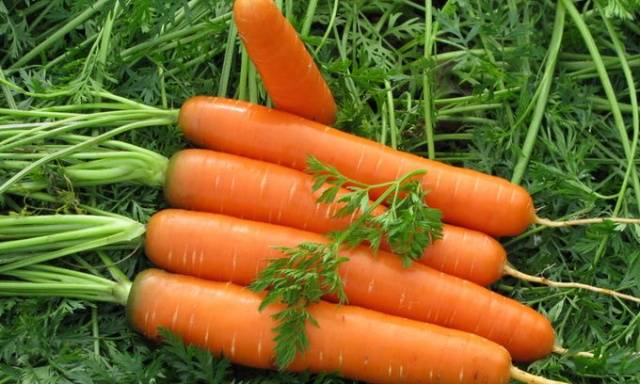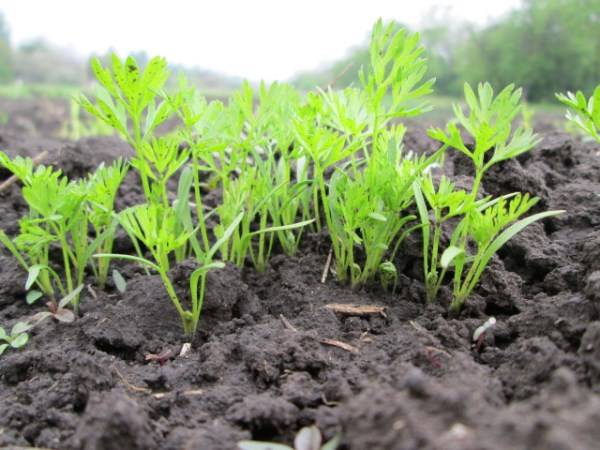Content
The weather conditions of Siberia make it difficult to grow many vegetable crops. In such an area, gardeners will need to put in a little more effort to get a good harvest of their favorite vegetables. However, the inhabitants of these regions have long adapted to the climatic conditions of Siberia and manage to grow almost all the crops known to us.
One of the most common vegetable crops is carrots. It is grown all over the world and Siberia is no exception. It’s hard to even imagine a garden where carrots are not grown. Moreover, a large number of varieties and hybrids of this vegetable are adapted to cold climates and can be successfully grown even in open ground. To do this, you need to know the basic rules for growing carrots. Many people are also interested in when to plant carrots in Siberia and what varieties to choose for this?
Features of growing carrots in Siberia
Carrots have never been considered a very heat-loving plant. Its seeds can germinate even at +4 °C. For normal growth, it needs from +20 °C to +30 °C. So the weather conditions of Siberia are quite acceptable for growing this tasty and healthy vegetable.Young carrot sprouts can even withstand light frosts without harmful consequences.
Too low and high temperatures can affect the size and color of the fruit. At temperatures above +25 °C, growth slows down significantly, and the color of the root crop may turn pale. At low temperatures, carrots also lose their rich color, and the fruit becomes gnarled and unattractive.
Until the root system is formed, the seed will use only those nutritional elements that it contains. And only after the roots appear, the plant will be able to receive nutrients from the soil. The germination period for carrots in Siberia is slightly longer than in the southern regions. Because of this, seeds need a lot of nutrients to germinate.
Also, in Siberian conditions it is impossible plant carrot seeds too deep. Long winters can also complicate the task. So you should choose the timing for planting carefully so that frost does not return and destroy the seeds. But still, gardeners manage to successfully grow in this area not only the familiar vegetable crops and grains, but also heat-loving watermelons and melons. So growing carrots no longer seems impossible.
It is worth noting that carrots are an incredibly healthy vegetable. It is not surprising that it is used to prepare so many dishes. You can eat carrots fresh, baked, stewed and canned. Many housewives make grated carrots in advance and freeze them.In any case, although carrots are often not the main ingredient, it is simply impossible to imagine many dishes without them.
This demand in cooking is also due to its high content of vitamins and minerals. For example, many people know that this vegetable is very good for vision. And all thanks to the fact that carrots contain a large amount of vitamin A. They are also rich in calcium, beta-carotene and iodine.
Until the 19th century, it did not have a particularly attractive color. There is evidence that at first carrots were purple in color, and then white, yellow and red varieties appeared. And only recently, Dutch breeders brought out carrots with the orange color we are used to.
Varieties suitable for Siberia
Many hybrids and varieties of carrots feel very comfortable in Siberia. To figure out which of them are suitable for cold regions, you need to know what types carrots are divided into. According to ripening time, all varieties can be divided into 3 types:
- Precocious. Such carrots ripen within 80–100 days after the appearance of the first shoots.
- Mid-season carrots. It will be possible to collect fruits in 100–125 days.
- Late carrots. You will have to wait at least 120 days for full ripening.
Gardeners living in this area have tried a huge number of varieties. Among all the diversity, carrots can be distinguished, which are distinguished by their particular unpretentiousness to conditions and high yields.
Variety "Nantes"
The variety has an average ripening time.In warm summer conditions, harvesting will be possible within 90 days after the first shoots appear. Sowing of seeds is carried out both in early spring and in winter. These carrots can be stored for a very long time. In a cold room you can preserve the harvest until spring. The variety has excellent taste.
Variety “Losinoostrovskaya 13”
The same applies to mid-season varieties. The fruits ripen within 90–100 days from the appearance of the first shoots. Carrots have a beautiful regular shape. The fruit pulp is juicy and crispy. Seeds are planted both in autumn and spring. The length of the fruit is from 13 to 15 cm, and the weight of carrots can be up to 150–160 g. This carrot tends to increase the amount of beta-carotene in winter. So, after lying down, the vegetable will only become healthier. The variety is stored for a long time, the taste of the fruit is preserved until spring.
Variety "Nastena-slastena"
A high-yielding variety with an average ripening time. Ripe fruits should be expected no earlier than 100 days from the appearance of the first shoots. Seeds begin to be sown in May. The variety grows well in open ground. The seeds are buried in the soil to a depth of no more than 2 cm. The fruits have excellent taste, the carrots are juicy, with a sweet aftertaste. The variety is suitable for making juice and eating fresh fruits.
Variety "Dayana"
Like all the previous ones, this variety belongs to the mid-season types of carrots. The fruit ripening period lasts from 100 to 120 days. The variety has high yields. The fruits are juicy, tasty, with a sweetish aftertaste. The vegetable keeps well in winter. The variety is suitable for heat treatment and fresh consumption.
When to plant carrots in Siberia
You can plant carrots in Siberia both in autumn and spring.The choice of planting date directly depends on when the gardener wants to harvest. Everyone knows that in order for carrots to ripen early, seeds will need to be planted before the start of winter. True, such root vegetables lose their freshness very quickly and are not suitable for winter storage. Carrots planted in winter are most often consumed fresh immediately after harvest.
But still, autumn planting of carrots has some advantages:
- rapid fruit ripening;
- large size carrots;
- disease resistance;
- simplified sowing process. The seeds do not need to be soaked and dried.
Carrots planted in the spring, of course, are stored much longer. It remains juicy and tasty until the summer. But this planting method also has some disadvantages:
- seeds must be processed in several stages before sowing;
- The entire period of carrot ripening will have to be actively controlled by weeds.
Spring planting in Siberia begins in early April. But first you can get rid of weed, thereby greatly facilitating further care of the garden bed. This procedure must begin immediately after the snow has melted. The bed prepared for planting seeds is covered with the most common transparent plastic film. Under it, the weeds will quickly sprout, after which you can begin to fight them. Agree, it is much easier to remove weeds from a garden bed where nothing is growing yet. After this, the bed is covered with a dark film or other opaque covering material. The cover must be removed immediately before planting. Next, the soil is loosened and sowing of seeds begins. They are placed in shallow furrows, watered and buried, lightly compacted. This time it is necessary to cover the soil with white film.This planting process will make it easier to care for the bed, because much fewer weeds will appear.
For autumn planting, you should select suitable varieties of carrots. The seed package should indicate whether it is suitable for planting in the fall. Practice shows that you need to sow seeds no earlier than mid-November. If you do this earlier, there is a risk that the carrots will sprout before the onset of cold weather, and then simply freeze.
Those who have planted carrots know that the seeds of this vegetable are very small, and sowing them in the right quantity can be difficult. Many ways have been invented to make this task easier. Some mix seeds with sand, sawdust or soil. Others use a starch solution for this purpose. And the most thoughtful ones glue the seeds to a prepared strip of paper with paste. By doing any of the described methods, you can save a lot of time that you would have spent on thinning the sprouts.
Also, autumn and spring planting differ in seed treatment methods. In autumn, the seeds are planted dry, without any preparatory procedures. But in the spring you will have to work a little harder. Since the seeds need to be removed from the layer of essential oils and then dried. How such seed preparation is carried out is discussed below.
Seed and site preparation
The next step is preparing the seeds for planting. It is worth noting that carrots take a very long time to sprout, so to speed up the process, the seeds should be soaked or germinated.
To prepare seeds, the following procedures are carried out:
- Mechanical seed selection. The seed is placed in warm water and mixed thoroughly. After some time, unsuitable seeds will float to the surface.Then the excess water is drained from the container. The seeds should be kept in water for another day, and then they should be dried. You can start sowing.
- Thermal treatment of seeds. This procedure increases germination and also destroys possible diseases and infections. So, the seeds are poured into a pre-prepared gauze bag and placed in hot water (about +50 °C). Next, the bag is taken out and immediately cooled in cold water. Then the seeds should be dried.
- Bubbling seeds. The seeds are kept in warm, oxygenated water for 24 hours. Immediately after this, they are pickled for about 20 minutes in a weak solution of manganese. Then the seeds are washed with water and dried.
- Treatment of seeds with growth stimulantsA. The seeds are soaked with solutions of special preparations. For example, phytosporin or sodium humate are often used for this.
The next, no less important stage is preparing the soil. Carrots are a light-loving plant, so you should choose unshaded areas. A large amount of light is the main condition for obtaining a good harvest. When grown in a shaded area, the yield is reduced by 20 times. Carrots also do not like soil that is too wet. It is very important that the soil is loose and fertile. If the soil density is high, the fruits will grow crooked and highly branched. If the soil is not loose enough, you can dig it up with the addition of sawdust or peat. As a fertilizer, you can add humus, compost or peat to the soil.
Caring for carrots after planting
In the future, carrots need timely watering, regular loosening of the soil, pest control and fertilizing as needed. The most important and long-awaited moment is the emergence of seedlings. Immediately after the young sprouts have appeared, it is necessary to thin out the carrots. Also at this stage it is necessary to loosen the soil. This should be done very carefully so as not to damage the plants. The best time for loosening will be after rain. And if rains are not expected in the near future, then before starting loosening the soil must be moistened.
When thinning out the seedlings, it is necessary to leave at least 4 cm between them. With a smaller distance, more root crops will grow, but they will be small and clumsy. You can thin out the sprouts only after watering the soil. This way, there will be less chance of damaging neighboring plants. It is worth considering that the smell of freshly extracted root vegetables can attract pests. Therefore, it is better to carry out thinning in the evening, when their activity is much lower. Unnecessary sprouts should be immediately thrown away from the garden. Then they need to be buried with soil or compost.
Over time, carrots can expose the top of the root, causing it to turn green. For this reason, a substance such as solanine appears in carrots. It can give fruits a bitter taste. To prevent this, the sprouts should be hilled.
Carrots begin to form root crops very late. First of all, all the forces of the plant are aimed at the growth of stems and leaves.And only a quarter of the entire growing season is responsible for the growth of the carrots themselves.
During this period, plants need regular watering more than ever. If the weather is hot outside, then you need to water the root vegetables at least 3 times a week. There is no need to over-water the carrots. A large amount of moisture can cause the vegetable to simply crack. The amount of water per square meter should be increased as the plants grow. But at the same time, the frequency of watering will need to be reduced. It will be necessary to water the garden bed not three times, but only once a week, but with a large amount of water.
Conclusion
As you can see, determining the time when to plant carrots in Siberia is not at all difficult. The main thing is to choose the right variety and focus on the weather conditions of your region. Remember that when planting seeds in the fall, you should wait until frost begins, otherwise the plants will sprout before the start of winter. When planting in the spring, on the contrary, it is necessary to choose a time so that the threat of frost has completely passed. By following these rules, you will be able to grow excellent carrots even in the climatic conditions of Siberia.


















